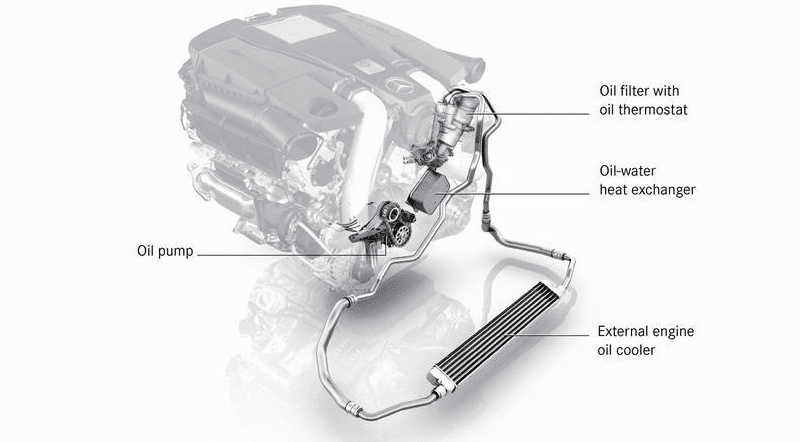Engine oil cooler function, types, and how it works
Engine manufacturers do many ways to create more efficient and durable engines for use in vehicles. One example is adding an oil cooler system component to the engine. An engine oil cooler is a part of the lubrication system. The purpose of the engine oil cooler is fundamental, especially in engines that produce high engine power and heat, such as diesel engines.
Yes, the engine oil cooler is more commonly found in diesel-engined cars and are known as a diesel engine oil cooler. It's because the diesel engines work with very high pressure and heat. We can also find an engine oil cooler in gasoline engines, mainly in gasoline engines that use a turbo intercooler. So, what exactly is the function of the engine oil cooler?
Engine oil cooler function
The engine's oil cooler function is to cool the engine oil temperature by releasing heat into the free air or the coolant. After the oil temperature drops, oil is channelled back into the engine.
Engine oil with cooler temperatures has a thicker oil viscosity than hot oil. This condition will increase the oil life and reduce the wear rate on engine components so that the engine is more durable and does not wear out quickly. That way, the oil cooler can maintain the engine oil function optimally.
The engine oil cooler types
There are two types of engine oil cooler systems in engine lubrication, namely:
A. Air cooling type
This air-cooled oil cooler system is an oil cooler whose oil cooling process uses free air as a heat release medium. The oil cooler component is shaped like a radiator, has air fins and a core where oil flows and undergoes a cooling process. The following is an example of an engine oil cooler with an air cooling type.
B. Water cooling type
This water-cooled oil cooler system is an oil cooler whose oil cooling process uses engine coolant as a heat release medium. This oil cooler component is generally placed in an engine coolant tube so that the oil cooler is submerged and covered by engine coolant. The following is an example of an engine oil cooler with a water cooling type.
Also read:
How does the engine oil cooler work?
Although these car oil coolers are divided into two types, this oil cooler works with the same principle of releasing heat. Yes, the oil cooler will transfer the hot engine oil temperature to free air or the engine coolant so that the oil temperature flowing out from the oil cooler is reduced.
This reduced oil temperature will pump back into the engine to further lubricate and absorb the engine's heat. After leaving the engine, this hot oil will return to the oil cooler to cool it down again, and that's how the oil cooler works.


